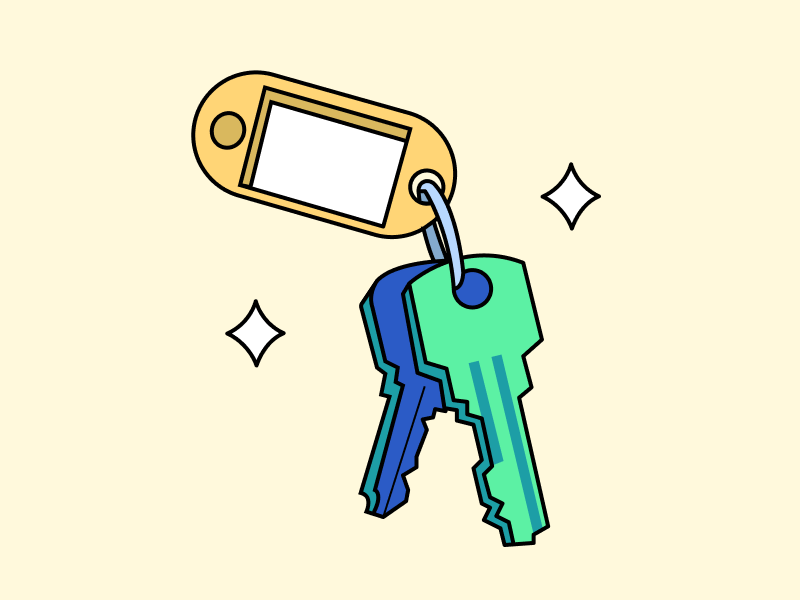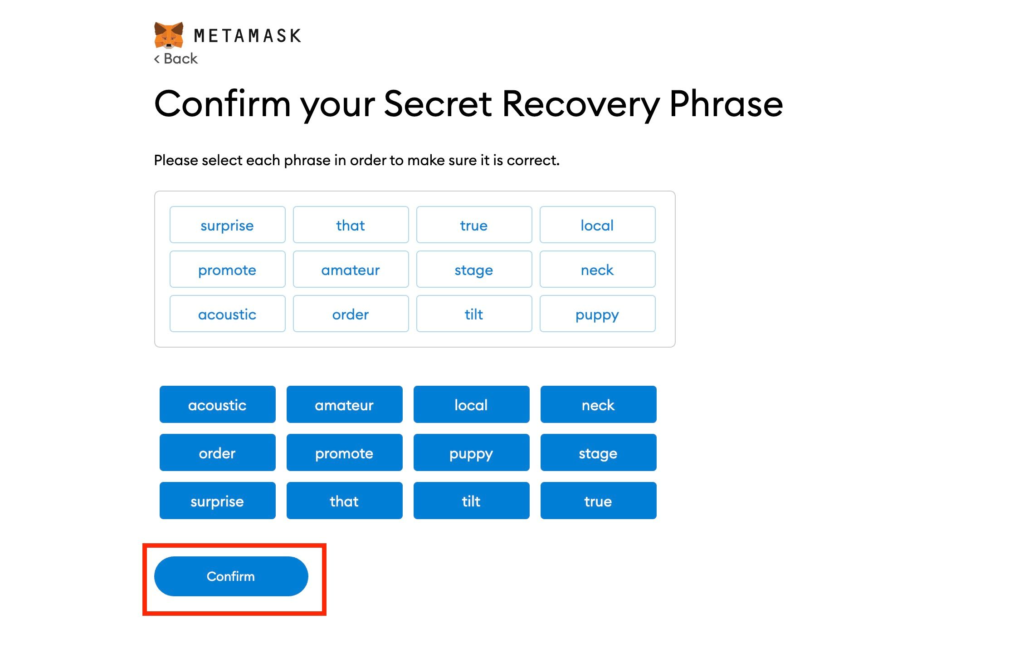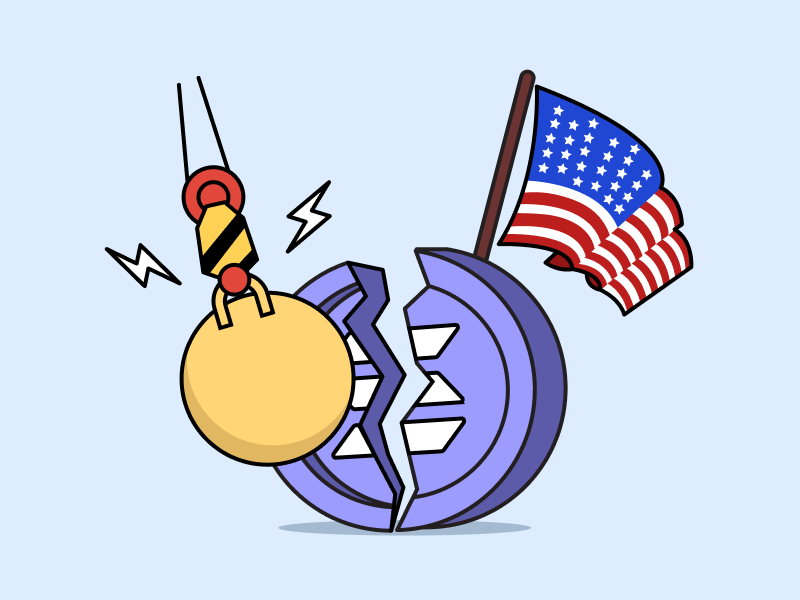Understanding the Differences: Seed Phrase, Private Key, and Public Key

When you create a non-custodial wallet, such as MetaMask, you will find several concepts like seed phrase or Secret Recovery Phrase (SRP), private key, and public key. To understand how your wallet works and how to secure it, it is crucial to have a clear understanding of how these three elements work. With a deep knowledge of seed phrases, private keys, and public keys, you can enhance the security of your assets. This article will dig deeper into these three concepts and identify their differences.
Article Summary
- 🔑 Seed phrase, private key, and public key are three important elements in the crypto world, especially in crypto wallets.
- 🌱 Seed phrase is a randomly generated group of words used for backing up and restoring a wallet. The seed phrase represents private key in a different, easier-to-manage format.
- 🔐 The private key is a string of numbers and letters (alphanumeric) that grants access and control over crypto assets at a specific wallet address. It is used to sign transactions and prove ownership of crypto assets.
- ⛓️ A public key is an alphanumeric string to send crypto assets into a wallet. It is used to secure transactions and identify addresses in the blockchain network.
Overview of Non-Custodial Wallet
A non-custodial wallet is a type of wallet that allows you to manage your private keys. It is different from a custodial wallet, which involves a third party in storing and managing private keys.
Non-custodial wallets include software wallets (Metamask and Trust Wallet) and hardware wallets (Ledger and Trezor). Meanwhile, custodial wallets are usually offered by centralized exchanges (CEX) such as Pintu, Binance, Coinbase, and others.
To learn more about the differences between non-custodial and custodial wallets, you can read this article.
The difference between the two types of wallets above lies in managing private keys. A private key is very important, especially in non-custodial wallets, because the user himself stores it. You need to keep your private key and not give it to anyone else. Because if another person has it, he can access all the assets in your crypto wallet.
In non-custodial wallets, we know important concepts such as seed phrase, private key, and public key. All three are essential elements in a crypto wallet; you must understand how they function.
Cryptography on Blockchain Technology
Blockchain technology is fundamentally constructed using cryptography, a method used to protect data by encoding it in a manner that can only be deciphered or accessed by those possessing the correct key.
In crypto wallets, cryptography is a key element in maintaining the security of crypto transactions and assets. One of the most frequently utilized cryptographic systems is known as asymmetric cryptography or “public key cryptography.”
It involves two different keys: a public key and a private key.
In cryptography, there are two processes applied: encryption and decryption. We can see the process in the following example:
When Ari wants to send crypto assets, such as ETH, to Yoga, Yoga will give his public key to Ari.
The public key that can receive the transaction typically represents a wallet address, which is a shortened form of the public key.
Technically, when Ari sends ETH, Yoga’s public key encrypts the crypto asset into unreadable data. Then, when Yoga receives the data, Yoga’s private key decrypts it, allowing Yoga to access the crypto asset that Ari has sent.
The example above illustrates that the public key is responsible for encrypting the data, and the private key for decrypting it. Consequently, only the owner of the matching private key can access the crypto asset linked to a public key.
What is the Seed Phrase?

When you create a wallet, such as MetaMask, you will get random words that can provide access to your wallet. These words are called seed phrase, and it usually consists of 12, 18, or 24 words from the standard BIP-39 Word List.

The seed phrase also referred to as the Secret Recovery Phrase (SRP), serves the purpose of wallet recovery in case you lose access to your crypto wallet. Such a loss may occur if you delete your wallet application.
During the initial setup of the wallet, it cryptographically generates the seed phrase. This seed phrase is intended to represent the private keys of a wallet and serves as a standard for all wallets to manage the assets secured by a crypto wallet.
The seed phrase aims to ease users in managing private keys. This is because private keys are a string of numbers and letters that are difficult to read. With seed phrases, users can read them easily and store them in a safe place.
Owning the seed phrase of a wallet signifies that the user possesses a non-custodial wallet, and they bear full responsibility for all the assets within it. Consequently, safeguarding the seed phrase is important, and it should remain confidential and not be disclosed to anyone else.
What is a Private Key?

A private key is a secret code in the form of a long string of numbers and letters that gives its owner access to crypto assets in the crypto wallet. The private key functions to sign transactions and prove ownership of crypto assets.
The private key plays an important role in generating the public key. Both the private key and public key are created in pairs every time a new wallet account is created. Private key can be 256-character binary codes, 64-digit hexadecimal codes, QR codes, or mnemonic phrases.
You can think of the private key as a password or PIN for a bank account, while the public key is the account number others can use to receive crypto assets.
You must keep your private keys very secure. Losing your private key means you will permanently lose access to your crypto assets. For maximum security, you can store your private key offline, such as by writing it (usually in the form of a seed phrase or mnemonic phrase) on paper, kept in a safe and secure location.
What is a Public Key?
A public key is a string of numbers and letters utilized for receiving cryptocurrency assets into a wallet. It plays a crucial role in securing transactions and identifying addresses within the blockchain network.
While a public key is often associated with a wallet address, it’s essential to note that a public key and wallet address are two different things. The wallet address is a “hashed version” or a shorter version of the public key. Here’s an example of a public key:
3048 0241 00C9 18FA CF8D EB2D EFD5 FD37
From the public key, after being hashed, it will become a wallet address as follows:
0xCD9bcdcF3C40F06D24B4f75d83c89A8aE0e3C05e
From that explanation, we can conclude that private keys can generate public keys, and public keys can generate wallet addresses.
As mentioned earlier, each public key is consistently associated with a matching private key. When making a transaction, the sender employs the public key to encrypt it, and only the owner of the matching private key can access the assets received in that transaction.
Seed Phrase vs. Private Key vs. Public Key

Seed phrases, private keys, and public keys are crucial in a crypto wallet. A seed phrase comprises a random group of words for backing up and restoring private keys. A private key, on the other hand, is a confidential code that empowers you with control over your crypto assets and is utilized for transaction signatures. Meanwhile, a public key functions as the address for receiving assets and can be shared with others.
Conclusion
In summary, understanding the functions of seed phrases, private keys, and public keys is important for safeguarding your crypto assets by knowing what to share and keep private.
Opting for a non-custodial wallet entails full responsibility for your assets, as you have direct control over the private key. Therefore, it’s important to secure it and refrain from sharing it with others, marking a vital step in fortifying the protection of your crypto assets.
References
- Cryptopedia Staff, What Are Public and Private Keys? Cryptopedia, accessed 31 Oktober 2023.
- BSC News Writer, Explained: Seed Phrase, Password, and Private Keys, BSC News, accessed 31 Oktober 2023.
- Amit Dutta, Private Key vs Seed Phrase 🔑, Medium, accessed 31 Oktober 2023.
- Okoye Kevin Chibuoyim, Public Key Isn’t Same As Your Wallet Address, Medium, accessed 31 Oktober 2023.
- Mike Martin, Private Key vs Seed Phrase vs Recovery Phrase: Beginners Guide, Tasty Crypto, accessed 1 November 2023.
Share


